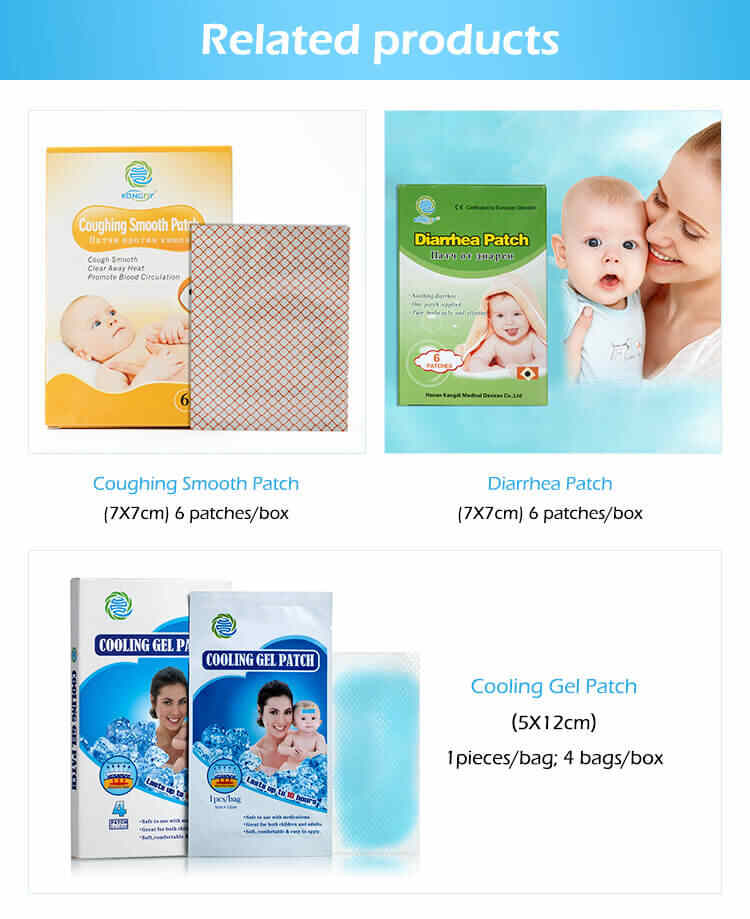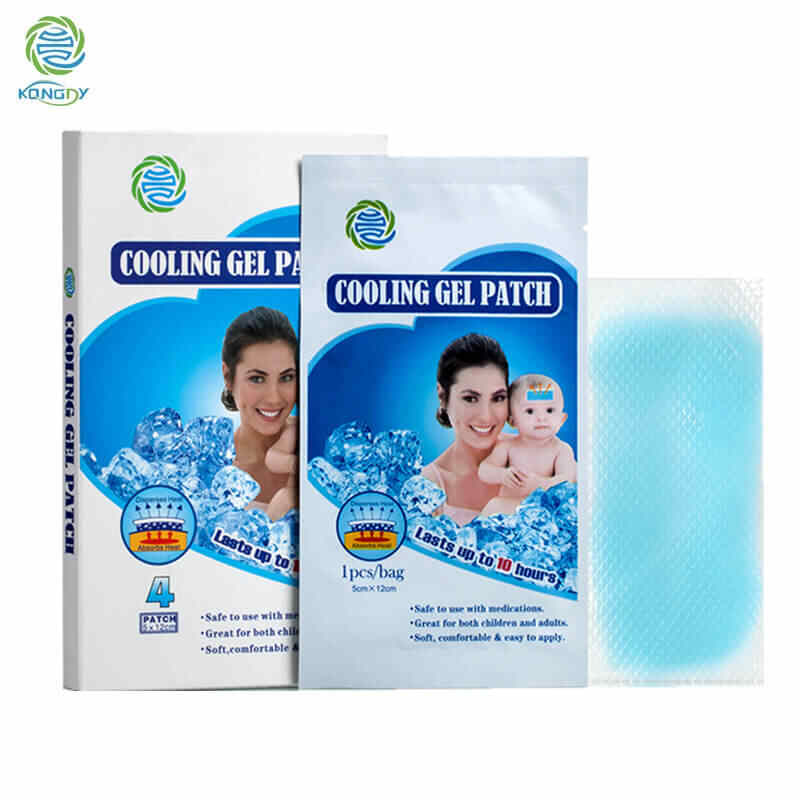Can Private Label Hydrogel Cooling Patches Be Eco-Certified?
A Detailed Guide for Brands, OEMs, and Suppliers
As consumer awareness of environmental sustainability grows, eco-friendly certifications have become a key differentiator in the wellness product market. Hydrogel cooling patches—traditionally designed for fever relief, skin cooling, and post-exercise recovery—are now entering this eco-conscious space. Brands exploring Private Label hydrogel cooling patches often ask: Can these products be eco-certified, and what does that process involve?
Whether you are partnering with a hydrogel cooling patches Manufacturer, working with a hydrogel cooling patches OEM, or developing Custom hydrogel cooling patches, understanding the path to eco-certification is essential to ensure credibility, market success, and regulatory compliance.

1. Understanding Eco-Certification for Hydrogel Cooling Patches
Eco-certification validates that a product meets established environmental standards across production, packaging, and disposal. For hydrogel cooling patches, this typically involves:
Sustainable materials: Using plant-based polymers, biodegradable backings, and non-toxic adhesives.
Energy-efficient manufacturing: Reducing carbon footprint during production.
Responsible packaging: Recyclable foil pouches, minimal plastic, or biodegradable boxes.
Waste reduction and recycling: Proper management of manufacturing waste.
A credible hydrogel cooling patches Supplier or Manufacturer will provide documentation demonstrating that their products meet recognized eco-certification standards.
2. Types of Eco-Certifications Relevant to Hydrogel Cooling Patches
Depending on your target market and brand positioning, several eco-certifications may apply:
A. ISO 14001 – Environmental Management Systems
This standard focuses on a manufacturer’s environmental management practices. Hydrogel cooling patches OEM suppliers with ISO 14001 certification ensure that their production processes minimize environmental impact.
B. FSC (Forest Stewardship Council) Certification
Relevant for paper-based or biodegradable packaging, FSC certification guarantees that materials come from responsibly managed forests.
C. EcoLabel (EU)
EcoLabel certifies products with a low environmental footprint in Europe, covering everything from materials to disposal. Private Label hydrogel cooling patches sold in EU markets can benefit from this recognition.
D. USDA BioPreferred Certification
For US markets, this certification applies to products containing renewable biological ingredients, such as plant-based hydrogel matrices.
E. Cradle to Cradle Certified™
This evaluates material health, recyclability, and manufacturing impact. Innovative Custom hydrogel cooling patches formulations can qualify for this certification.
3. How Private Label Hydrogel Cooling Patches Can Achieve Eco-Certification
Achieving eco-certification for Private Label hydrogel cooling patches requires collaboration with an experienced hydrogel cooling patches Manufacturer or OEM. The process generally involves:
Step 1: Selecting Sustainable Materials
Choose biodegradable or plant-based hydrogel polymers.
Replace petroleum-based adhesives with eco-friendly alternatives.
Ensure all packaging materials are recyclable or compostable.
Step 2: Supplier Verification
Partner with a hydrogel cooling patches Supplier that has experience producing eco-certified products.
Request documentation and third-party audit reports to verify sustainable practices.
Step 3: Product Testing
Conduct safety, adhesion, and cooling performance tests to ensure that eco-friendly materials perform as well as traditional ones.
Stability and shelf-life testing is essential to meet consumer expectations.
Step 4: Certification Application
Submit all documentation to the relevant eco-certification body (e.g., EcoLabel, FSC, USDA BioPreferred).
Include manufacturing process reports, material composition data, and environmental impact assessments.
Step 5: Ongoing Compliance and Renewal
Maintain eco-friendly production practices to ensure certification remains valid.
Schedule periodic audits and renew certifications as required.
4. Common Challenges in Eco-Certifying Hydrogel Cooling Patches
While eco-certification offers a market advantage, several challenges exist:
A. Material Performance
Eco-friendly adhesives or hydrogel polymers sometimes have different properties. Leading hydrogel cooling patches OEM suppliers overcome this by formulating high-performance, biodegradable alternatives.
B. Manufacturing Costs
Sustainable materials and processes may increase production costs. However, eco-certification can justify a higher retail price and attract premium consumers.
C. Regulatory Alignment
Eco-certifications are separate from health and safety regulations. Even with eco-certification, products must still comply with FDA, CE, or local health authority requirements.
D. Supplier Reliability
Not all suppliers have experience with eco-certification. Selecting a reputable hydrogel cooling patches Manufacturer with proven expertise reduces risk of delays or compliance failures.
5. Advantages of Eco-Certification for Private Label Products
A. Market Differentiation
Eco-certified Private Label hydrogel cooling patches stand out in a crowded marketplace, appealing to environmentally conscious consumers.
B. Consumer Trust
Eco-certification signals that your brand is committed to sustainability, building credibility and customer loyalty.
C. Regulatory Confidence
Eco-certifications often require documentation and auditing, which aligns with good manufacturing practices and reduces regulatory risk.
D. Premium Pricing
Eco-certified products can often command higher prices, increasing profit margins for brands using Custom hydrogel cooling patches strategies.
6. How an Experienced OEM Supports Eco-Certification
A professional hydrogel cooling patches OEM partner streamlines eco-certification by:
Advising on material selection and eco-friendly formulas.
Providing test reports, MSDS, and third-party audits.
Aligning production processes with ISO 14001 and other standards.
Assisting with certification applications and documentation.
By working with a skilled hydrogel cooling patches Supplier, your Private Label hydrogel cooling patches line can achieve certification efficiently and reliably.
7. Case Study: Successful Eco-Certified Private Label Launch
A North American wellness brand partnered with an established hydrogel cooling patches Manufacturer to develop Custom hydrogel cooling patches for eco-conscious consumers. Key steps:
Replaced conventional hydrogel with a plant-based formula.
Used FSC-certified biodegradable packaging.
Partnered with a supplier experienced in USDA BioPreferred certification.
Submitted documentation and passed EcoLabel audits.
Outcome:
Products achieved official eco-certification.
Cooling performance and skin comfort matched previous regular patches.
Market reception was strong, with premium pricing justified.
8. Key Takeaways for Brands
Eco-certification is achievable for Private Label hydrogel cooling patches when you collaborate with the right hydrogel cooling patches OEM or Supplier.
Material selection, manufacturing practices, and documentation are critical.
Certified eco-friendly products can differentiate your brand, increase consumer trust, and access new markets.
Ongoing compliance ensures sustainability credentials remain credible and legally defensible.
Conclusion
Yes, Private Label hydrogel cooling patches can be eco-certified—but success requires careful material selection, supplier verification, and collaboration with experienced hydrogel cooling patches Manufacturer partners. Whether developing Custom hydrogel cooling patches or launching a new line under your own brand, eco-certification offers a strategic advantage by combining sustainability with performance, regulatory compliance, and consumer trust.
By investing in certification and working with reputable hydrogel cooling patches Suppliers, brands can deliver high-quality, environmentally responsible products that meet market expectations while enhancing brand reputation.
Related Questions & Short Answers
Q1: Can any hydrogel cooling patches be eco-certified?
A: Yes, provided the materials, adhesives, and packaging meet the required environmental standards.
Q2: Does eco-certification affect cooling performance?
A: When developed by an experienced hydrogel cooling patches OEM, performance is comparable to regular patches.
Q3: Can Private Label hydrogel cooling patches get USDA BioPreferred or EcoLabel certification?
A: Absolutely, with proper formulation and documentation from a compliant Manufacturer or Supplier.
Q4: Are eco-certified patches more expensive to produce?
A: Typically slightly higher due to materials and audits, but market advantages and premium pricing often offset costs.
Q5: How do I verify a hydrogel cooling patches Supplier’s eco-certification claims?
A: Request official certificates, material composition reports, and third-party audit documentation before partnering.






